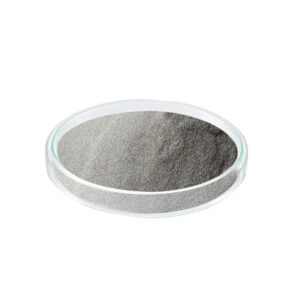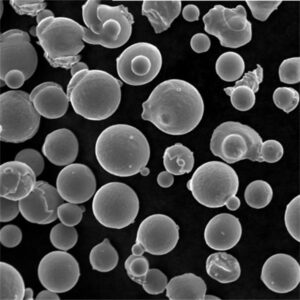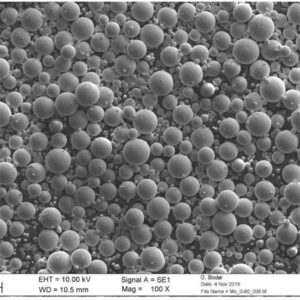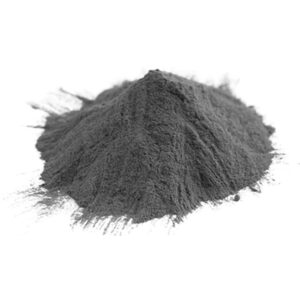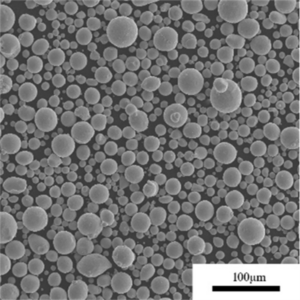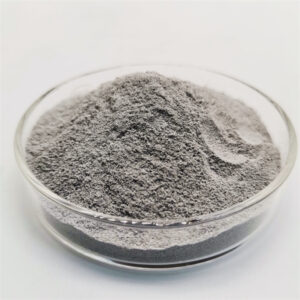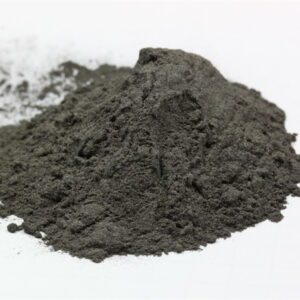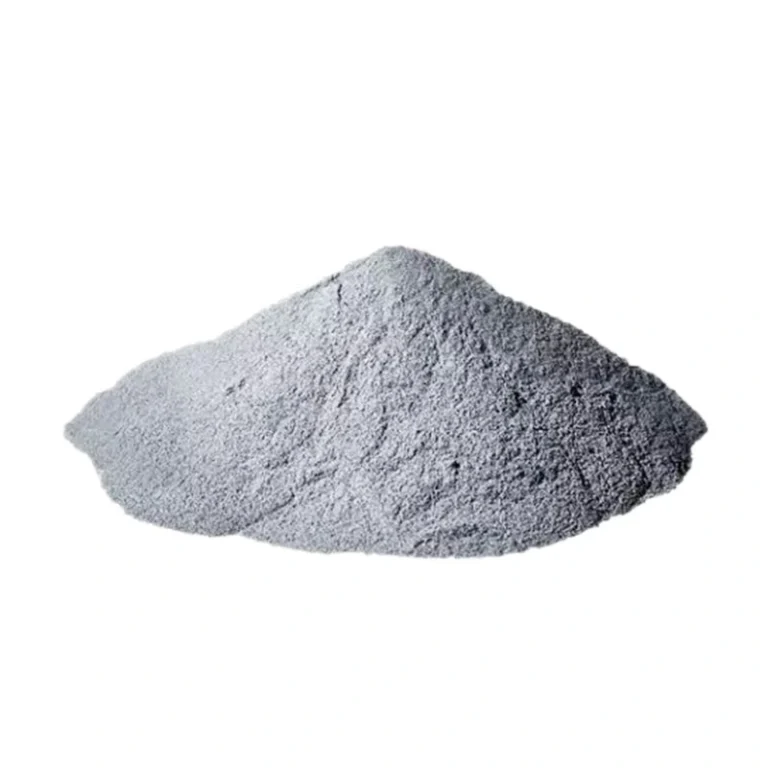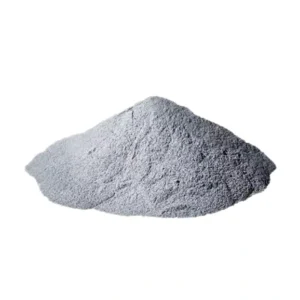Overview of molybdenum titanium powders
モリブデンチタン粉 refer to fine metallic particles of each element produced through atomization processes. They display high strength, hardness and heat resistance.
The powders are used individually or as blends for manufacturing high performance alloys. Their controlled particle size distribution allows complex near-net shape components to be built up from layers during metal 3D printing.
Some key characteristics of molybdenum and titanium powders:
モリブデンパウダー
- Excellent creep resistance and stability at high temperatures
- 低熱膨張係数
- 高い硬度と耐摩耗性
- Used as alloying addition to strengthen steels and superalloys
チタンパウダー
- Extremely strong yet lightweight as a structural metal
- 優れた耐食性
- 医療用インプラントの生体適合性
- 反応性があり、制御された処理が必要
Blended/Alloyed Powders
- Combine beneficial properties of each element
- Allows customized material performance
- Requires optimized 3D printing parameters
By manipulating compositions through AM, innovative alloys with superior properties suited for extreme environments can be created.
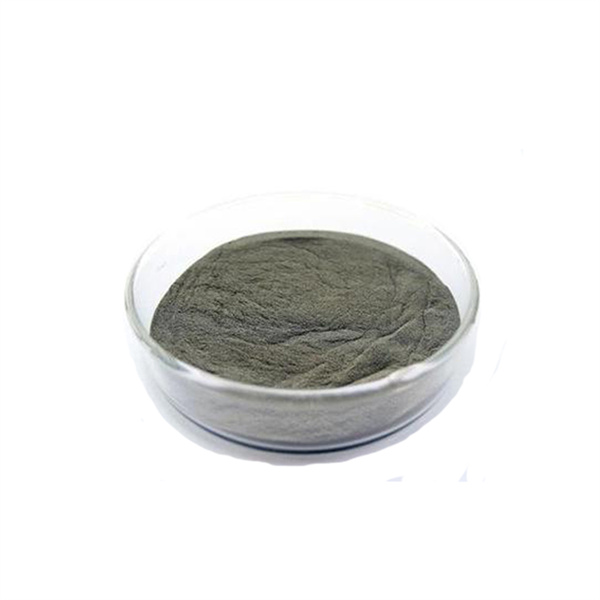
Types of Molybdenum and Titanium Powders
Molybdenum and titanium powders are commercially available in various types for metal additive manufacturing:
| Powder Variant | 特徴 | 一般的な用途 |
|---|---|---|
| モリブデン | Pure and alloyed grades | AM of moly alloys, catalysts |
| チタン Ti-6Al-4V | Aerospace alloy | Load-bearing aerostructures |
| Titanium Ti-6Al-7Nb | Biocompatible alpha-beta alloy | Medical implants, prosthetics |
| Mo-Ti elemental blends | Custom alloy compositions | Advanced engineering applications |
| Mo-Ti master alloys | プレアロイブレンド | Simplified AM processing |
In their elemental form, molybdenum provides high temperature hardness while titanium contributes strength and corrosion resistance. By combining both through AM, innovative alloys can be created with enhanced overall performance.
Composition/Alloying
Molybdenum and titanium powders have the following nominal compositions:
モリブデンパウダー
| エレメント | 組成範囲 |
|---|---|
| モリブデン (Mo) | 99% and above |
| 酸素 (O) | 0.01%以下 |
| カーボン(C) | 0.01%以下 |
| 鉄(Fe) | 0.01%以下 |
| Other metals | 0.01%以下 |
High purity is required for reproducibility during AM and downstream processing. Contamination can adversely affect material properties.
チタン Ti-6Al-4V
| エレメント | 重量 % |
|---|---|
| チタン(Ti) | バランス |
| アルミニウム(Al) | 5.5-6.75 |
| バナジウム (V) | 3.5-4.5 |
| 鉄(Fe) | < 0.3 |
| 酸素 (O) | <0.2 |
| Other metals | <0.1 |
Small amounts of alloying additions of aluminum and vanadium significantly enhance titanium’s strength for load-bearing lightweight structures.
For blended Mo-Ti powders, the relative ratios can be varied from 100% Mo to 100% Ti to create customized alloys. Using both elemental and pre-alloyed blended powders, the unlimited freedom of compositions allows hitherto unexplored alloys to be developed through AM.
の性質 モリブデンチタン粉
モリブデンパウダー
| 物理的性質 | |
|---|---|
| 密度 | 10.22g/cm3 |
| 融点 | 2610°C |
| 熱伝導率 | 138W/mK |
| 電気抵抗率 | 5.5 μΩ-cm |
| 熱膨張係数 | 5.3 μm/m-°C |
| 機械的特性 | |
|---|---|
| 硬度 | ~300 HV |
| 極限引張強さ | 600-800 MPa |
| 降伏強さ(0.2%オフセット) | 500+ MPa |
| 伸び | 30-50% |
| 弾性係数 | 325 GPa |
Molybdenum powder enables extremely hard and heat resistant alloys to be fabricated using AM techniques. Parts maintain high strength in oxidizing, corrosive and frictional wear conditions at elevated temperatures exceeding 1000°C.
Titanium Ti-6Al-4V Powder
| 物理的性質 | 価値観 |
|---|---|
| 密度 | 4.43 g/cm3 |
| 融点 | 1604-1660°C |
| 熱伝導率 | 7.2 W/mK |
| 電気抵抗率 | 170 μΩ-cm |
| Coeff. of Thermal Expansion | 8.6 μm/m-°C |
| 機械的特性 | As Built | アニール |
|---|---|---|
| 引張強度 | 1050 MPa | 950 MPa |
| 降伏強さ(0.2%オフセット) | 900 MPa | 850 MPa |
| 伸び | ~15% | ~20% |
| 硬度 | ~350 HV | ~300 HV |
The fine balance of high strength along with decent ductility makes this an extremely popular aerospace alloy for critical printed parts in rocket engines, airframes and turbines.
By blending molybdenum and titanium powders in different ratios, a combination of their properties can be realized in customized alloys.
アプリケーション
Molybdenum and titanium powders enable high performance metal AM parts tailored to extreme environments:
石油・ガス
- Fracking pumps and valves exposed to abrasive fluids at high pressures and temperatures
- Corrosion resistant piping for oil well acids, gases and brines
航空宇宙
- Aircraft turbine blades and vanes operating at >1000°C for improved fuel efficiency
- Lightweight airframe and engine brackets with enhanced specific strength
自動車
- Connecting rods, drive shafts and chassis components reducing weight
- Friction stir welding tools for fabricated body panels
メディカル
- Orthopedic implants with bone-like elastic modulus
- Corrosion resistant bio-interactive devices
インダストリアル
- Lightweight robot arms with improved strength-to-weight ratio
- Dimensionally stable power generation hardware
By overcoming limits of conventional processing, AM with molybdenum and titanium enables next-gen high performance structures. Parts show marked gains in service performance under thermal, mechanical and chemical stresses.
Specifications of molybdenum titanium powders
Molybdenum and titanium powders must meet exact chemistry requirements and stringent quality specifications for additive manufacturing use per industry accepted standards:
Chemical Purity Standards
| パウダーグレード | スタンダード |
|---|---|
| モリブデン | ASTM B393 |
| チタン Ti-6Al-4V | ASTM F2924 |
| Titanium Ti-6Al-7Nb | ASTM F3001 |
代表的な粉体特性
| 属性 | 必要条件 | 試験方法 |
|---|---|---|
| 粒子形状 | 主に球形 | SEM imaging per ASTM B822 |
| 見かけ密度 | 2 to 5 g/cc | MPIF 04 or ASTM B212 |
| 流量 | >30 sec for Hall flow test | ASTM B213 |
| 粒度分布 | D10, D50, D90 optimized for AM process | ASTM B822 |
| Loss on ignition (LOI) | Low oxygen/nitrogen | 不活性ガス融解分析 |
| 微細構造 | Defect-free, no satellites | SEM at high magnifications |
The requirements aim to ensure uniform melting behavior, defect-free builds and reproducible end part properties.
グローバルサプライヤー
Many established manufacturers provide molybdenum and titanium powders for AM applications:
モリブデンパウダー
| 会社概要 | ブランド名 | 製造方法 |
|---|---|---|
| H.C.スタルク | モ | 電解 |
| モリメット | PureMo | 水素還元 |
| プランゼー | MolyPowder | Calcium reduction |
| 中西部タングステン | TeroMoly | Calcium reduction |
チタンパウダー
| 会社概要 | 対象学年 | 生産方法 |
|---|---|---|
| エーピーアンドシー | Ti-6Al-4V, Other Ti Alloys | プラズマ霧化 |
| カーペンター添加剤 | Ti-6Al-4V | プラズマ霧化 |
| サンドビック | Ti6Al4V ELI, Ti6Al4V ELI-0406 | プラズマ霧化 |
| テクナ | Ti-6Al-4V, Ti 6Al-7Nb | プラズマ霧化 |
| TLSテクニーク | Ti6Al4V, Ti6Al4V ELI, Ti Grade 23 | Gas, plasma atomization |
Both established metal powder producers as well as specialized AM powder manufacturers provide these materials to demanding industry specifications.
Pricing of モリブデンチタン粉
As widely used materials in metal AM, published pricing indicators for molybdenum and titanium powders are available:
モリブデンパウダー
| 粒子径 | 価格帯 |
|---|---|
| 10-45 μm | $40 – $60 per kg |
| 15-53 μm | $50 – $70 per kg |
| Custom sizes | > $100 per kg |
Titanium Ti-6Al-4V Powder
| 粒子径 | 価格帯 |
|---|---|
| 15-45 μm | $150 – $450 per kg |
| 45-100 μm | $100 – $350 per kg |
| Custom sizes | > $500 per kg |
Prices depend on quality grade, lot size, distribution range, plasma vs gas atomization and purchase volume. Large quantity and contract pricing is usually negotiated directly with suppliers.
Pros and Cons of Molybdenum and Titanium Alloys from AM
長所
- 卓越した高温性能
- Enhanced specific strength and stiffness
- Resilient with thermal and fatigue loading
- Complex cooling channels integrate strength and heat transfer
- Consolidated assemblies lower component count
- Shorter development timelines relative to castings
- Custom alloys with compositions tailored to needs
- Reactive materials processed without contamination
短所
- Higher cost than standard alloys
- Challenging printability dictates rigorous parameter optimization
- Post-processing may be required to achieve final properties
- Anisotropy from layer-wise construction
- Lack of design and material standards
- Reactive powders require controlled storage and handling
With continued research and qualification, metal AM enables molybdenum and titanium to fulfill their potential in designing lighter and stronger high performance structures.
How are Molybdenum and Titanium Powders Made?
Advanced gas atomization processes manufacture the fine metallic powders with precise control over critical characteristics like particle shape, size range and chemical purity.
ガス噴霧
High purity ingots are induction melted in an inert atmosphere and the liquid metal stream poured into specialized atomization vessels. Powerful argon or nitrogen gas jets atomize the metal into fine droplets which rapidly solidify into powder.
By optimizing gas flow parameters and cooling rates, spherical particles with the desired particle size distribution are obtained. The powder is then sieved into different size classifications required for various AM processes.
Additional Processing
Further steps may be taken to enhance powder properties – degassing to lower oxygen levels, annealing to reduce internal stresses from rapid solidification, and blending with other powder fractions to obtain specific size ranges.
The powders are finally packaged under inert atmospheres to prevent oxidation before shipping to customers. Handling and storage protocols prevent moisture absorption or contamination during downstream metal AM processing.
Binder Jetting vs. Powder Bed Fusion of Molybdenum and Titanium
Molybdenum and titanium alloys can be printed using both binder jetting and powder bed fusion categories:
| アスペクト | バインダー・ジェット | パウダーベッド・フュージョン |
|---|---|---|
| Build Method | Liquid binding agents | Laser/e-beam melting |
| 決議 | ~100 μm | ~50 μm |
| 多孔性 | Higher, requires infiltration | Lower, 99%+ density |
| 表面仕上げ | Rough, needs machining | Moderate, may need finishing |
| 機械的特性 | Low, varies through part | Higher, more uniform |
| 寸法精度 | ±0.3% with shrinkage | ±0.1% or better |
| 後処理 | Debinding, sintering, HIP | Support removal, heat treatment |
| ビルド・サイズ | Industrial scale | Smaller chambers |
| 所要時間 | 日々 | 時間~1~2日 |
| 経済学 | より低い部品コスト、より高い生産量 | 数量が少なく、高価なハードウェア |
バインダージェッティングは、スピードと低コストのため、デザインコンセプトモデルに適しています。粉末床溶融は、優れた特性を持つ忠実度の高い最終使用部品を作成します。
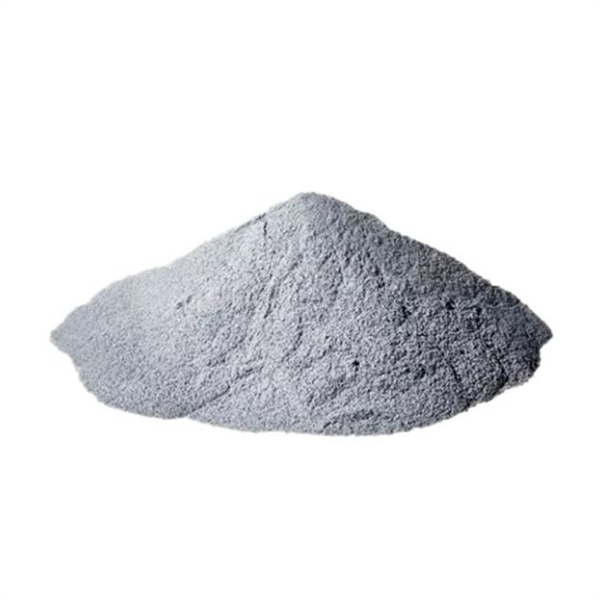
モリブデンチタン合金 - 展望
モリブデンとチタンは、それぞれ高温性能と強度対重量比の点で望ましい。両方の元素を組み合わせることで、AMはテーラーメイドの特性を持つユニークな合金組成を解き放ちます。
潜在的合金グループ
- 超高温強度を実現するMo-Ti金属間化合物
- 1500℃以上の耐酸化性を持つMo-Tiシリサイド
- 高温で極めて硬いMo-Tiホウ化物
- セラミックの硬度レベルに適合するMo-Ti炭化物
これらの先端材料は、金属AMプロセスで可能になる組成制御と微細構造操作によって、従来の加工における障壁を克服する。
ターゲット・アプリケーション
- 極超音速航空機と再突入構造
- 使用温度を2倍に高めた次世代ジェットタービンおよびロケットエンジンの高温部部品
- 排気温度が高い軽量自動車パワープラント
- 強烈な放射性高熱の中で働き続ける原子炉内部
- 温度と効率を高める工業炉用発熱体および器具
アディティブ・マニュファクチャリングは、モリブデンやチタンにまつわる制約を取り払い、極限環境や高性能用途に新たな地平を開く。
よくあるご質問
Q:モリブデンは何に使われるのですか?
A: 優れた高温特性を持つモリブデンは、航空宇宙、発電、炉の建設、ミサイル部品など、要求の厳しい用途で使用される耐熱鋼や超合金を強化する合金添加物として主に使用されている。
Q:モリブデンに毒性はありますか?
A: 元素モリブデンとその合金は一般的に毒性レベルが低く、工学的用途には安全である。しかし、一部のモリブデン化合物は、長時間吸入した場合、発ガン性の可能性があり、取り扱いや機械加工時に保護具を使用する必要があります。
Q: チタンは高価ですか?
A: チタン合金は、鋼やアルミニウム合金に比べて原材料費が高いです。しかしながら、AM製造におけるBuy-to-Fly比は1に近づいており、完成したチタン部品のコストは、新しい技術や設計を採用する意欲のある航空宇宙のような産業にとって経済的なものとなり得ます。
Q: チタンがインプラントに理想的な理由は何ですか?
A: チタン合金の生体適合性は、その高い強度対重量比と相まって、人骨の代替に理想的です。NbやTaのような生体適合性のあるβ安定剤と合金化することで、弾性率を骨の弾性率に近づけることができ、荷重を支えるインプラントの寿命を向上させることができます。
Q: モリブデンとチタンにはどの3Dプリント工程が使われますか?
A: 最終用途の高性能部品には、選択的レーザー溶解(SLM)や電子ビーム溶解(EBM)のような粉末溶融技術が主に使用されています。高温の熱源により、エンジニアリング用途に適した優れた特性を持つ完全密度に近い造形を実現します。
Q: なぜモリブデンとチタン粉末をブレンドするのですか?
A: モリブデンは高温硬度、耐クリープ性、工具鋼のような特性を高め、チタンは優れた耐食性と低密度の特性をもたらします。これらの粉末をAMで直接ブレンドして作られたカスタム合金は、高度な用途に理想的な組み合わせです。


